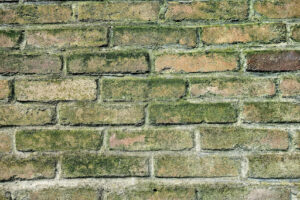Difference Between Mold and Mildew
 Mold and mildew are kinds of fungi found commonly in homes. They both grow and thrive in similar environments and surfaces and can spread in similar ways. When mold or mildew infestations get severe, they can cause structural damage and adverse health effects.
Mold and mildew are kinds of fungi found commonly in homes. They both grow and thrive in similar environments and surfaces and can spread in similar ways. When mold or mildew infestations get severe, they can cause structural damage and adverse health effects.
There is a lot of confusion about the differences between mold and mildew because of how similar they look and all the other properties they share. In reality, mold and mildew are different things and have to be treated differently. Understanding these differences will help you keep your home or commercial property free from both mold and mildew infestations.
This article will tell you all you need to know about the difference between mold and mildew. They both share key characteristics, which makes them sometimes hard to identify and differentiate between. First, let’s learn about how they differ in appearance and smell.
Differences in appearance and smell
Appearance
Mildew: Mildew is usually white, yellow, or gray, and its texture is a little powdery or fluffy. Downy mildew starts as small yellow spots that turn brighter as it grows before finally turning brown. Powdery mildew starts out as white and powdery before turning brown and black.
Mold: Mold is fuzzy in texture and is found in many different colors and sizes. Mold can be orange, black, brown, green, or purplish in color. Mold can grow on and underneath the surface of objects that might have gotten wet.
Smell
Mold and mildew are usually detected due to the smell they produce way before seeing them. Both fungi produce gases that can smell musty, damp, earthy, like decaying wood or damp socks. These similar smells are another reason why it can be had to differentiate between the two.
If you can smell musty or damp smells in your home, it means that mold spores might have already been spread in your home. These spores can affect people’s health adversely and should be remediated as soon as possible.
Where do mildew and mold grow?
Both mold and mildew appear on similar natural materials like paper, leather, or wood. In residential or commercial properties, they are usually found in damp or moist areas like bathrooms, shower cubicles, basements, and behind or in between walls. Also, any area of the property that might have experienced water damage could be the perfect environment for mold or mildew to grow in.
Mildew is a surface-growing fungus and is much easier to detect and remediate. Mold grows on the surface and burrows itself deep underneath the surface also. This makes mold much harder to spot and also much more difficult to remediate when compared to mildew.
Effects of mold and mildew on heath and structures
Mold and mildew both can cause lots of trouble if left to grow over long periods and should be taken care of as soon as they are detected.
Mildew: Mildew is usually found in gardens as it likes to grow on plants and crops, but it can be found indoors too. When mildew is found growing indoors, it can affect a person’s health in many ways. Inhaling mildew spores can cause headaches, respiratory issues, coughing, and headaches. The effect of mildew on structures is very low as it only grows on the surface of materials and doesn’t cause problems to the insides of a structure.
Mold: mold, if left unattended for long periods, can cause severe damage to structures and health also. Exposure to mold spores for long durations can result in various health issues like allergic reactions, sneezes, skin infections, and throat and nasal congestion. Mold spores can also cause severer health issues like respiratory problems, asthma attacks, pneumonia, migraines, and heart problems. Black mold, in particular, is very dangerous as they produce mycotoxins which can have severe long-term effects on health, especially in children or people with compromised immune systems.
Getting rid of Mold or Mildew
Another major difference between mold and mildew is how hard it is to get rid of both of them.
Mildew: Removing mildew is much easier compared to the removal of mold. A scrubbing brush and some cleaning products are all you need to get rid of mildew. Normal cleaning products that you may already have in your home or commercial property are enough to clean up mildew off of surfaces.
Mold: Mold removal can be much more complicated and difficult than removing mildew. To correctly get rid of mold, first, you need to identify what kind of mold it is. You also have to see how far and deep the mold has already spread. Some molds can be cleaned and removed using bleach or other cleaning products. Make sure to wear protective gear like goggles, a mask, and gloves when removing mold.
If the mold in your home is identified as toxic, it’s best left to the professionals for removal. Removing toxic mold by yourself is very risky as it can have severe effects on your health which is why it is recommended to leave mold removal to the experts.
911 Restoration of Kansas City Metro
If your residential or commercial property requires any mold removal or remediation, call 911 Restoration of Kansas City Metro now at (913) 227-4578. Our team is professionally trained, and IICRC-certified to perform complete water restoration and mold cleanup in Kansas City Metro. Our team works closely with all customers to give them the complete satisfaction they need. Our experts are available 24/7, every day of the year, to help you with all your restoration needs.



